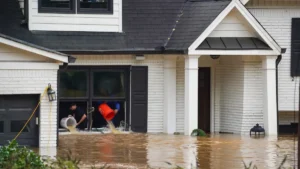The Solution to Sweltering City Summers
Urban planners need to add more green space and tree-lined avenues to the mix to combat global warming in our concrete jungles. Andrew Seaman / Unsplash
Andrew Seaman / Unsplash
Tomorrow’s sweltering cities could be tamed, thanks to their trees’ shade. Leafy figs and magnolias, beeches and birches, planes and chestnuts in the sterile tarmac and cement world of the great modern city could deliver canopies that could bring temperatures down by more than 5°C [9 F] in the hottest of the heatwave summers.
And researchers now know this, not because they tested it with computer simulations, and not because they interpreted the radiation signal from satellite studies. They know it because one scientist fitted one bicycle with its own tiny weather station and took the temperature every five metres along 10 rides or transects, each along roughly seven kilometres of highly built-up city infrastructure.
To make sure of her readings, Carly Ziter of the University of Wisconsin-Madison repeated each ride between three and 12 times at different times of the day
And the conclusion: the city streets were hot as sunlight slammed down on the hard, impervious surfaces of street, pavement, flyover and square. But where there was green sward or shade from a tree, the temperature dropped.
In those patches where two or more trees met and two-fifths of the sky was screened by foliage, the temperature dropped by an average of 3.5°C [6.3 F] and sometimes − especially where the number of trees and their proximity delivered ever more shade − by up to 5.7°C [10.26 F].
Trees not only deliver shade, they transpire. That is, they exhale water through the stomata in their leaves and provide a second outdoor air-conditioning mechanism. The difference, too, between shade and sunlight temperatures can set up an air flow.
The results, reported in the Proceedings of the National Academy of Sciences, “suggest strategies for managing urban land-cover patterns to enhance resilience to cities’ warming.” In other words, trees are good things to plant, anywhere, but especially in the concrete jungle.
Once again, this is no surprise. Researchers have been looking at what might be called the green response to urban warming for years, and found that urban tree cover can add as much as $500 million to the economies of the great cities.
Urban trees don’t just deliver shade, they can soak up atmospheric carbon in ways that match any rainforest giant, and the simple presence of trees in suburban roads can add appreciably to property values as well as simple amenity.
Hotter Cities
And tomorrow’s cities will need help from the trees. More than half of the world’s population is already crammed into cities, and all cities are plagued by what is known as the urban heat island effect: that is, because of lighting, central heating, air conditioning, traffic, tarmac, tiles and slate, metro systems, and light industry, cities can be hotter than the surrounding countryside by 3°C [5.4 F] or more.
With global warming so far on track to reach a global average of 3°C higher than at any time in human history by the century’s end – when cities will be even more crowded as population soars – city planners need a low-cost answer to what promises to be the serious and potentially lethal health hazard of ever more intense and prolonged heatwaves.
And not only do trees deliver cool shade: there is even research to suggest that they do better in the warmer cities. The Madison studies offer fine detail to something most city dwellers know intuitively. Cities need green spaces and tree-lined avenues. The next step is to work out how best to use such findings.
“It’s not really enough to just kind of go out and plant trees, we really need to think about how many we are planting and where we’re planting them. We’re not saying planting one tree does nothing, but you’re going to have a bigger effect if you plant a tree and your neighbour plants a tree and their neighbour plants a tree,” Dr Ziter said.
“The trees we plant now or the areas we pave now are going to be determining the temperatures of our cities in the next century.”
Your support is crucial…With an uncertain future and a new administration casting doubt on press freedoms, the danger is clear: The truth is at risk.
Now is the time to give. Your tax-deductible support allows us to dig deeper, delivering fearless investigative reporting and analysis that exposes what’s really happening — without compromise.
Stand with our courageous journalists. Donate today to protect a free press, uphold democracy and unearth untold stories.









You need to be a supporter to comment.
There are currently no responses to this article.
Be the first to respond.